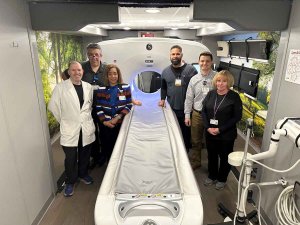On December 20, 2019, the President signed into law the Setting Every Community Up for Retirement Enhancement (SECURE) Act. The SECURE Act was passed by significant bi-partisan majorities in both the House and the Senate, and it includes some of the most significant changes to retirement plans in several years.
Elimination of the “Stretch IRA”
Although there is no such thing as a “stretch IRA”, this term is often used to describe the fact that the recipient of an inherited IRA could stretch out their distributions over their lifetime, thereby potentially allowing many years of tax deferred growth. For example, if a 28 year old grandson received an inherited IRA from his deceased grandmother, he could have potentially “stretched” out distributions from the IRA until he was into his eighties.
Under the SECURE Act, that has all changed. Now, that grandson must take the IRA distributions out over ten years. There are some exceptions for some beneficiaries, including: spouses, the disabled or chronically ill, individuals who are not more than ten years younger than the deceased IRA owner, and minor children. The exception for minor children expires when they become legal adults. At that point, the child must take the distributions out over the next ten years. The beginning of that ten year period, however, can be delayed up to the age of 26, if the child is still in school.
In addition to the exemption for certain beneficiaries, the application of the new ten year rule on distributions will not apply to governmental plans, such as 403(b) and 457 plans, until January 1, 2022.
Change of the time period when RMDs start
Under the prior law, if you had an IRA, you needed to start taking out required minimum distributions (RMDs) in the year you turned 70 ½. Under the new law, you can delay taking RMDs until you are 72. If you do not need the income at 70 ½, this allows you to keep the IRA growing tax free until you reach 72.
IRA contributions no longer prohibited after age 70 ½
Under the prior law, if you were still working at age 70 ½ and earning compensation, you could no longer contribute to a traditional IRA after you reached 70 ½. Under the new law, this prohibition is lifted and you can continue to contribute to your IRA.
New qualified birth or adoption expense exception
Generally speaking, if you take a distribution from your IRA before you are 59 ½, you will be subject to a 10% early withdrawal penalty. Under the new law, you may take a penalty-free distribution of up to $5,000 after you have a child or adopt a child. This distribution applies individually, so if both parents have an IRA, they could withdraw penalty-free up to $10,000. In addition, you may restore those funds later back into your IRA without regard to annual contribution limits.
Important changes for employers
The SECURE Act includes several new provisions to encourage employers to set up retirement plans for their employees. Employers may now take advantage of “safe harbor” provisions, which will encourage the use of annuities in retirement plans. If the employer abides by these provisions, they will be insulated from legal liability if the insurance company providing the annuity to the employee later becomes unable to meet its obligations to the employee.
These safe harbor provisions are meant to encourage a greater use of annuities in retirement planning. While everyone’s retirement plans and goals are different, the advantage of annuities is that they provide a set amount of monthly income in retirement, akin to a pension payment. As a result, the chance of the employee running out of money in retirement is potentially reduced.
The SECURE Act also provides increased tax credits for small businesses that establish retirement plans, as well as new or increased tax credits for those that auto enroll their employees in retirement plans. Another welcome change is greater access to retirement plans for part-time employees.
Under the prior law, employers could exclude part-time employees from participating in a 401(k) plan if they worked less than 1,000 hours in a year. Now, if the employee works at least 500 hours in a year for at least three consecutive years, they will be able to participate. This provision starts in 2021, so the first eligible employees will be able to participate in an employer provided 401(k) plan in 2024.
Additional changes not related to retirement plans
The SECURE Act also includes several changes to the law not related to retirement plans. Included in those changes are new modifications regarding 529 plans. Under the new law, 529 plan funds can now be used to pay off qualified student loan debt up to $10,000. This limit is a per-person lifetime limit, but the law allows additional similar payments of up to $10,000 each for the siblings of the 529 beneficiary.
As with all significant changes in the law, the SECURE Act presents challenges and opportunities. In order to successfully navigate the new retirement landscape, it is advisable to consult with an experienced professional, such as an estate planning attorney, accountant, or financial advisor.
Matthew J. Dorsey, Esq. is a Partner with O’Connell and Aronowitz, 1 Court St., Saratoga Springs. Over his twenty-three years of practice, he has focused in the areas of elder law, estate planning, and estate administration. Mr. Dorsey can be reached at 518-584-5205, This email address is being protected from spambots. You need JavaScript enabled to view it. and www.oalaw.com.





























 How to resolve AdBlock issue?
How to resolve AdBlock issue? 









